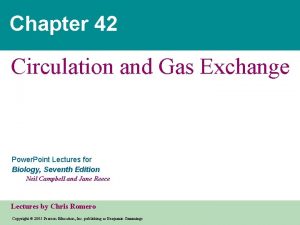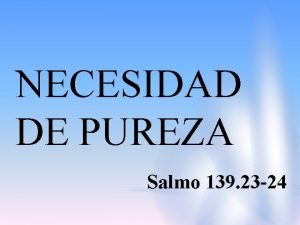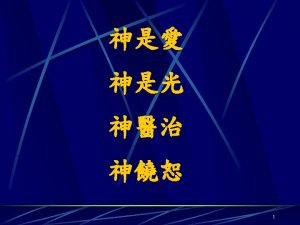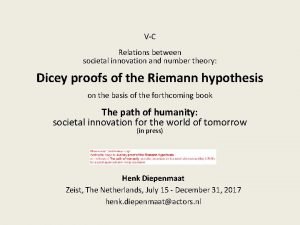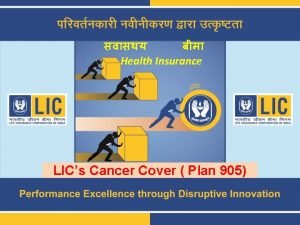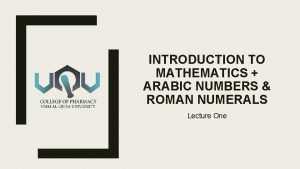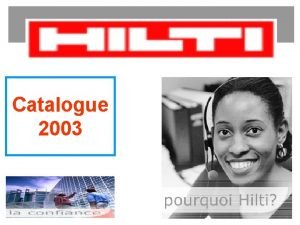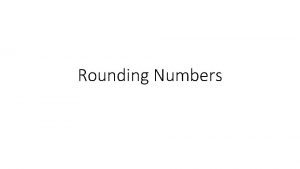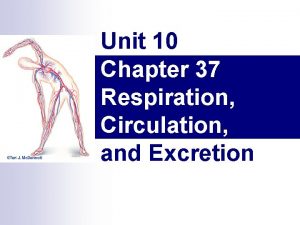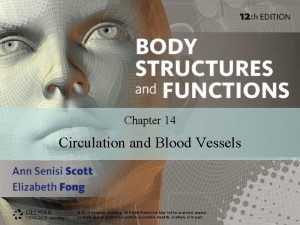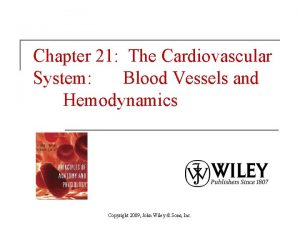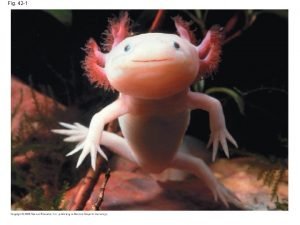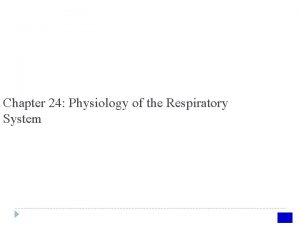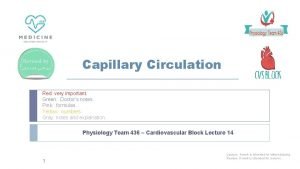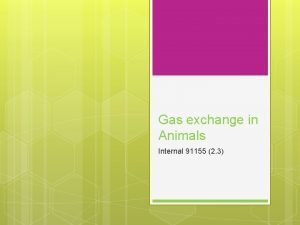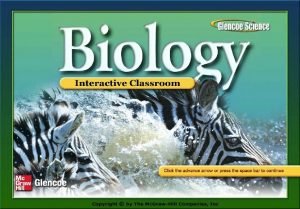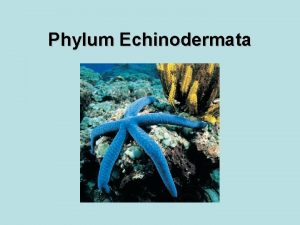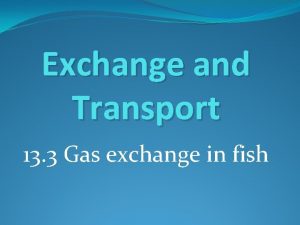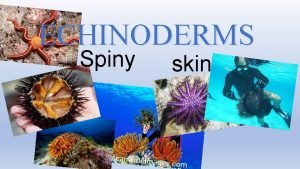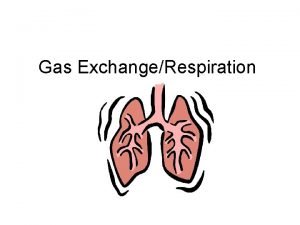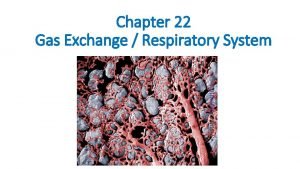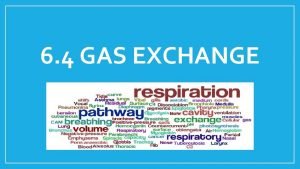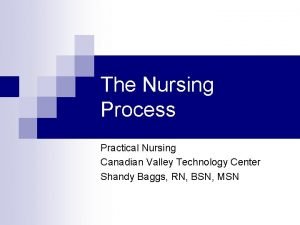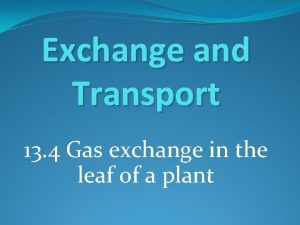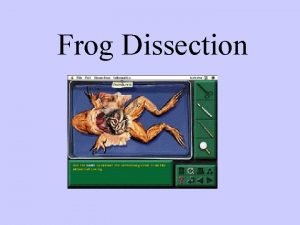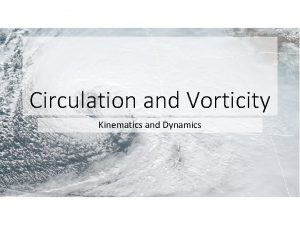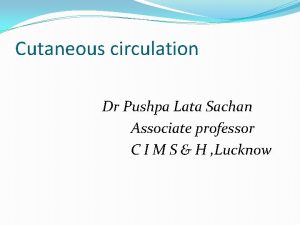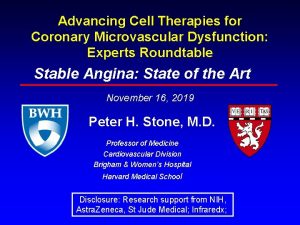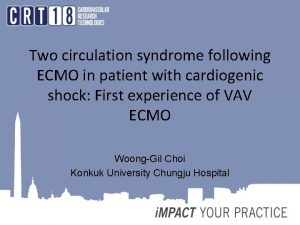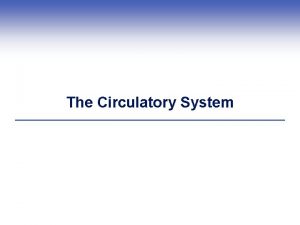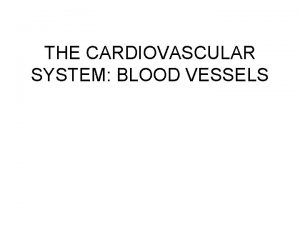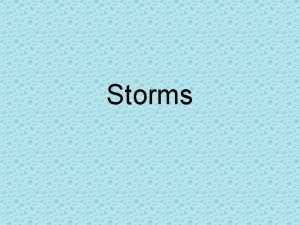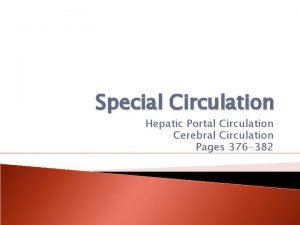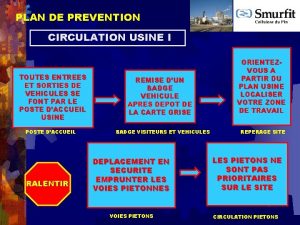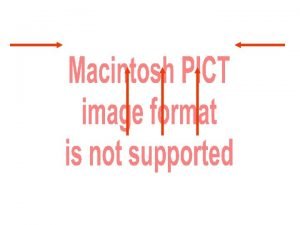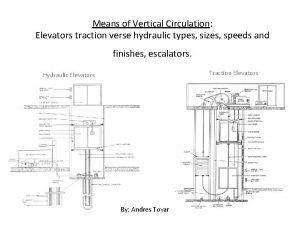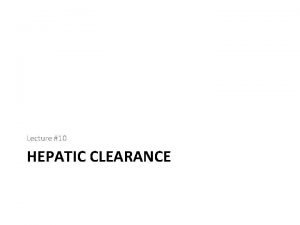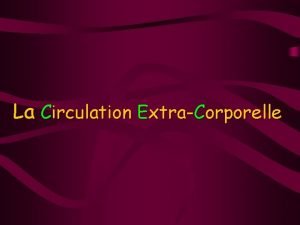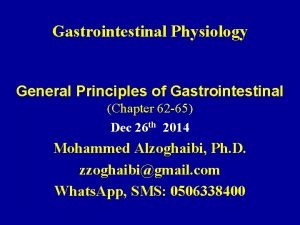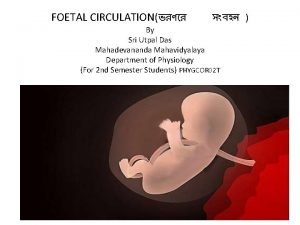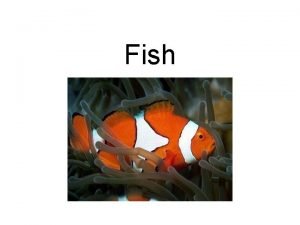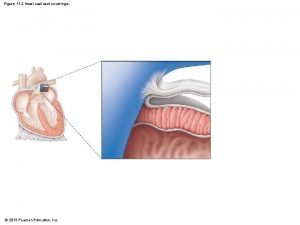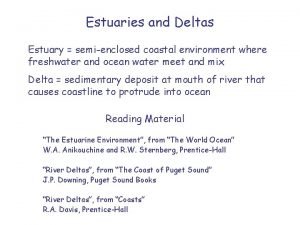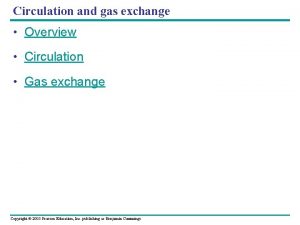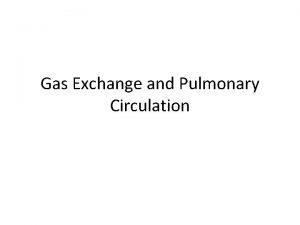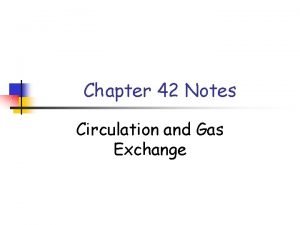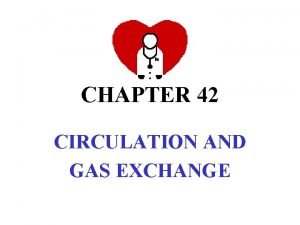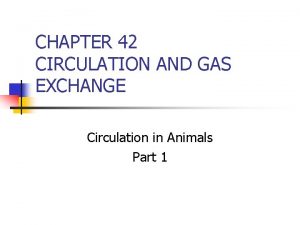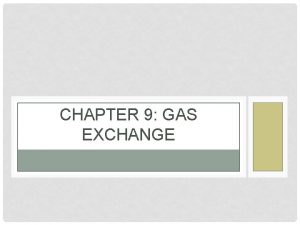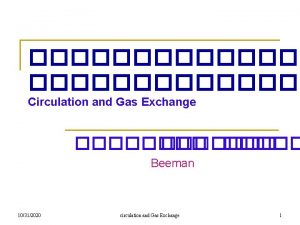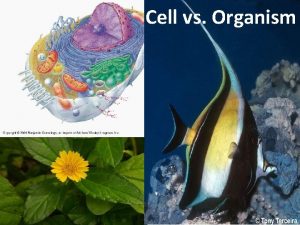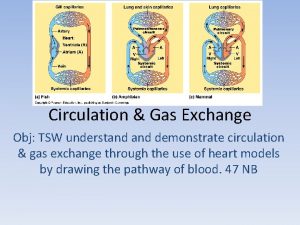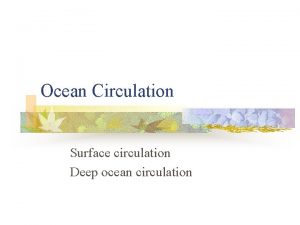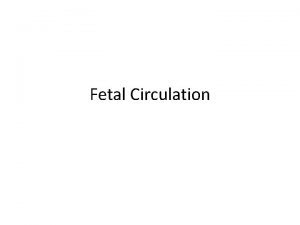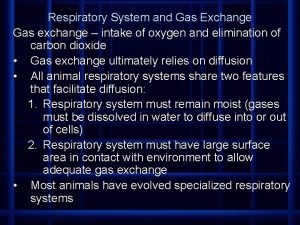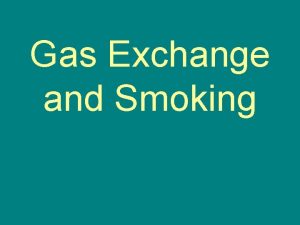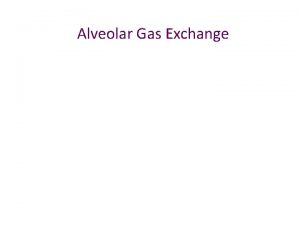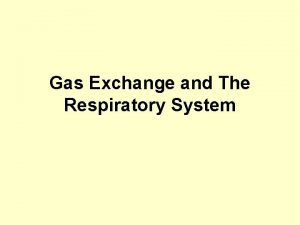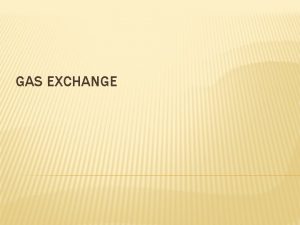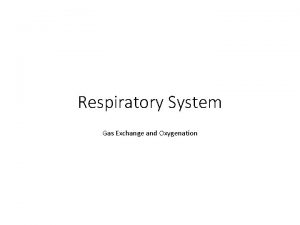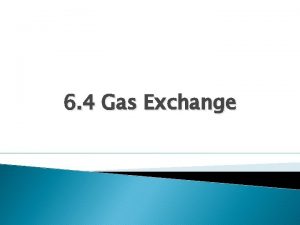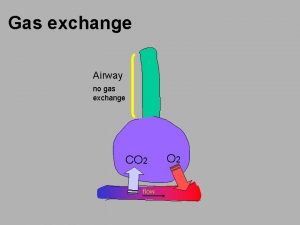Chapter 42 Circulation and Gas Exchange 903 905




































































- Slides: 68

Chapter 42 Circulation and Gas Exchange 903 -905, 911 -915, 919 -925 Power. Point® Lecture Presentations for Biology Eighth Edition Neil Campbell and Jane Reece Lectures by Chris Romero, updated by Erin Barley with contributions from Joan Sharp Copyright © 2008 Pearson Education, Inc. , publishing as Pearson Benjamin Cummings

Concept 42. 2: Coordinated cycles of heart contraction drive double circulation in mammals • The mammalian cardiovascular system meets the body’s continuous demand for O 2 Copyright © 2008 Pearson Education, Inc. , publishing as Pearson Benjamin Cummings

Mammalian Circulation • Blood begins its flow with the right ventricle pumping blood to the lungs • In the lungs, the blood loads O 2 and unloads CO 2 • Oxygen-rich blood from the lungs enters the heart at the left atrium and is pumped through the aorta to the body tissues by the left ventricle • The aorta provides blood to the heart through the coronary arteries Copyright © 2008 Pearson Education, Inc. , publishing as Pearson Benjamin Cummings

• Blood returns to the heart through the superior vena cava (blood from head, neck, and forelimbs) and inferior vena cava (blood from trunk and hind limbs) • The superior vena cava and inferior vena cava flow into the right atrium Animation: Path of Blood Flow in Mammals Copyright © 2008 Pearson Education, Inc. , publishing as Pearson Benjamin Cummings

Fig. 42 -6 Superior vena cava Capillaries of head and forelimbs 7 Pulmonary artery Capillaries of right lung Aorta 9 3 Capillaries of left lung 3 2 4 11 Pulmonary vein Right atrium 1 Pulmonary vein 5 Left atrium 10 Right ventricle Left ventricle Inferior vena cava Aorta 8 Capillaries of abdominal organs and hind limbs

The Mammalian Heart: A Closer Look • A closer look at the mammalian heart provides a better understanding of double circulation Copyright © 2008 Pearson Education, Inc. , publishing as Pearson Benjamin Cummings

Fig. 42 -7 Pulmonary artery Aorta Pulmonary artery Right atrium Left atrium Semilunar valve Atrioventricular valve Right ventricle Left ventricle

• The heart contracts and relaxes in a rhythmic cycle called the cardiac cycle • The contraction, or pumping, phase is called systole • The relaxation, or filling, phase is called diastole Copyright © 2008 Pearson Education, Inc. , publishing as Pearson Benjamin Cummings

Fig. 42 -8 -1 Semilunar valves closed AV valves open Relaxation phase, blood returning from the large veins flows into the atria and ventricles through AV valves 1 Atrial and ventricular diastole Cardiac cycle 0. 4 sec

Fig. 42 -8 -2 2 Atrial systole; ventricular diastole Semilunar valves closed A brief period of atria systole then forces all blood remaining in the atria into the ventricles 0. 1 sec AV valves open Relaxation phase, blood returning from the large veins flows into the atria and ventricles through AV valves 1 Atrial and ventricular diastole Cardiac cycle 0. 4 sec

Fig. 42 -8 2 Atrial systole; ventricular diastole Semilunar valves closed A brief period of atria systole then forces all blood remaining in the atria into the ventricles 0. 1 sec AV valves open Relaxation phase, blood returning from the large veins flows into the atria and ventricles through AV valves 1 Atrial and ventricular diastole Cardiac cycle 0. 4 sec Semilunar valves open 0. 3 sec AV valves closed Ventricular systole pumps blood into the large arteries through the semilunar valves 3 Ventricular systole; atrial diastole

• The heart rate, also called the pulse, is the number of beats per minute • The stroke volume is the amount of blood pumped in a single contraction (average ~ 70 ml) • The cardiac output is the volume of blood pumped into the systemic circulation per minute and depends on both the heart rate and stroke volume • 70 ml x 72 beats/min = 5 L/min Copyright © 2008 Pearson Education, Inc. , publishing as Pearson Benjamin Cummings

• Four valves prevent backflow of blood in the heart, made of flaps of connective tissue • The atrioventricular (AV) valves separate each atrium and ventricle • The semilunar valves control blood flow to the aorta and the pulmonary artery Copyright © 2008 Pearson Education, Inc. , publishing as Pearson Benjamin Cummings

• The “lub-dup” sound of a heart beat is caused by the recoil of blood against the AV valves (lub) then against the semilunar (dup) valves • Backflow of blood through a defective valve causes a heart murmur Copyright © 2008 Pearson Education, Inc. , publishing as Pearson Benjamin Cummings

Maintaining the Heart’s Rhythmic Beat • Some cardiac muscle cells are self-excitable, meaning they contract without any signal from the nervous system Copyright © 2008 Pearson Education, Inc. , publishing as Pearson Benjamin Cummings

• The sinoatrial (SA) node, or pacemaker, sets the rate and timing at which cardiac muscle cells contract (wall of the right atrium near where the superior vena cava enters the heart) • Impulses from the SA node travel to the atrioventricular (AV) node • At the AV node, the impulses are delayed and then travel to the Purkinje fibers that make the ventricles contract Copyright © 2008 Pearson Education, Inc. , publishing as Pearson Benjamin Cummings

• Impulses that travel during the cardiac cycle can be recorded as an electrocardiogram (ECG or EKG) Copyright © 2008 Pearson Education, Inc. , publishing as Pearson Benjamin Cummings

Fig. 42 -9 -1 1 Pacemaker generates wave of signals to contract. SA node (pacemaker) ECG The control of heart rhythm

Fig. 42 -9 -2 2 Signals are delayed at AV node The control of heart rhythm

Fig. 42 -9 -3 3 Signals pass to heart apex. Bundle branches Heart apex The control of heart rhythm

Fig. 42 -9 -4 4 Signals spread throughout ventricles. Purkinje fibers The control of heart rhythm

Fig. 42 -9 -5 1 Pacemaker generates wave of signals to contract. SA node (pacemaker) 2 Signals are 3 Signals pass delayed at AV node to heart apex. Bundle branches ECG The control of heart rhythm Heart apex 4 Signals spread throughout ventricles. Purkinje fibers

• The pacemaker is influenced by nerves, hormones (epinephrine), body temperature (1 °C →↑ 10 beats per minute), and exercise Copyright © 2008 Pearson Education, Inc. , publishing as Pearson Benjamin Cummings

Concept 42. 4: Blood components function in exchange, transport, and defense • In invertebrates with open circulation, blood (hemolymph) is not different from interstitial fluid • Blood in the circulatory systems of vertebrates is a specialized connective tissue Copyright © 2008 Pearson Education, Inc. , publishing as Pearson Benjamin Cummings

Blood Composition and Function • Blood consists of several kinds of cells suspended in a liquid matrix called plasma • The cellular elements occupy about 45% of the volume of blood Copyright © 2008 Pearson Education, Inc. , publishing as Pearson Benjamin Cummings

Fig. 42 -17 Plasma 55% Constituent Major functions Water Solvent for carrying other substances Cellular elements 45% Cell type Ions (blood electrolytes) Sodium Potassium Calcium Magnesium Chloride Bicarbonate Osmotic balance, p. H buffering, and regulation of membrane permeability Number per µL (mm 3) of blood Functions Erythrocytes (red blood cells) 5– 6 million Transport oxygen and help transport carbon dioxide Leukocytes (white blood cells) 5, 000– 10, 000 Defense and immunity Separated blood elements Plasma proteins Albumin Osmotic balance p. H buffering Fibrinogen Clotting Immunoglobulins (antibodies) Defense Lymphocyte Basophil Eosinophil Neutrophil Monocyte Substances transported by blood Nutrients (such as glucose, fatty acids, vitamins) Waste products of metabolism Respiratory gases (O 2 and CO 2) Hormones Platelets 250, 000– 400, 000 Blood clotting

Plasma • Blood plasma is about 90% water • Among its solutes are inorganic salts in the form of dissolved ions, sometimes called electrolytes • Another important class of solutes is the plasma proteins, which influence blood p. H, osmotic pressure, and viscosity • Various plasma proteins function in lipid transport, immunity, and blood clotting Copyright © 2008 Pearson Education, Inc. , publishing as Pearson Benjamin Cummings

Cellular Elements • Suspended in blood plasma are two types of cells: – Red blood cells (erythrocytes) transport oxygen – White blood cells (leukocytes) function in defense • Platelets, a third cellular element, are fragments of cells that are involved in clotting Copyright © 2008 Pearson Education, Inc. , publishing as Pearson Benjamin Cummings

Erythrocytes • Red blood cells, or erythrocytes, are by far the most numerous blood cells • They transport oxygen throughout the body • They contain hemoglobin, the iron-containing protein that transports oxygen Copyright © 2008 Pearson Education, Inc. , publishing as Pearson Benjamin Cummings

Leukocytes • There are five major types of white blood cells, or leukocytes: monocytes, neutrophils, basophils, eosinophils, and lymphocytes • They function in defense by phagocytizing bacteria and debris or by producing antibodies • They are found both in and outside of the circulatory system Copyright © 2008 Pearson Education, Inc. , publishing as Pearson Benjamin Cummings

Platelets • Platelets are fragments of cells and function in blood clotting Copyright © 2008 Pearson Education, Inc. , publishing as Pearson Benjamin Cummings

Blood Clotting • When the endothelium of a blood vessel is damaged, the clotting mechanism begins • A cascade of complex reactions converts fibrinogen to fibrin, forming a clot • A blood clot formed within a blood vessel is called a thrombus and can block blood flow Copyright © 2008 Pearson Education, Inc. , publishing as Pearson Benjamin Cummings

Fig. 42 -18 -1 Collagen fibers Platelet releases chemicals that make nearby platelets sticky Platelet plug

Fig. 42 -18 -2 Collagen fibers Platelet releases chemicals that make nearby platelets sticky Platelet plug Clotting factors from: Platelets Damaged cells Plasma (factors include calcium, vitamin K)

Fig. 42 -18 -3 Collagen fibers Platelet releases chemicals that make nearby platelets sticky Platelet plug Clotting factors from: Platelets Damaged cells Plasma (factors include calcium, vitamin K) Prothrombin Thrombin

Fig. 42 -18 -4 Red blood cell Collagen fibers Platelet releases chemicals that make nearby platelets sticky Platelet plug Fibrin clot Clotting factors from: Platelets Damaged cells Plasma (factors include calcium, vitamin K) Prothrombin Thrombin Fibrinogen Fibrin 5 µm

Stem Cells and the Replacement of Cellular Elements • The cellular elements of blood wear out and are replaced constantly throughout a person’s life • Erythrocytes, leukocytes, and platelets all develop from a common source of stem cells in the red marrow of bones • The hormone erythropoietin (EPO) stimulates erythrocyte production when oxygen delivery is low Copyright © 2008 Pearson Education, Inc. , publishing as Pearson Benjamin Cummings

Fig. 42 -19 Stem cells (in bone marrow) Myeloid stem cells Lymphocytes B cells T cells Neutrophils Erythrocytes Platelets Eosinophils Monocytes Basophils

Cardiovascular Disease • Cardiovascular diseases are disorders of the heart and the blood vessels • They account for more than half the deaths in the United States Copyright © 2008 Pearson Education, Inc. , publishing as Pearson Benjamin Cummings

Atherosclerosis • One type of cardiovascular disease, atherosclerosis, is caused by the buildup of plaque deposits within arteries Copyright © 2008 Pearson Education, Inc. , publishing as Pearson Benjamin Cummings

Fig. 42 -20 a Connective tissue Smooth muscle (a) Normal artery Endothelium 50 µm

Fig. 42 -20 b Plaque (b) Partly clogged artery 250 µm

Heart Attacks and Stroke • A heart attack is the death of cardiac muscle tissue resulting from blockage of one or more coronary arteries • A stroke is the death of nervous tissue in the brain, usually resulting from rupture or blockage of arteries in the head Copyright © 2008 Pearson Education, Inc. , publishing as Pearson Benjamin Cummings

Treatment and Diagnosis of Cardiovascular Disease • Cholesterol is a major contributor to atherosclerosis • Low-density lipoproteins (LDLs) are associated with plaque formation; these are “bad cholesterol” • High-density lipoproteins (HDLs) reduce the deposition of cholesterol; these are “good cholesterol” • The proportion of LDL relative to HDL can be decreased by exercise, not smoking, and avoiding foods with trans fats Copyright © 2008 Pearson Education, Inc. , publishing as Pearson Benjamin Cummings

• Statins: drugs given to people at high risk that lowers LDL levels • Aspirin: blocks the inflammatory response, help prevent the recurrence of heart attacks and stroke • C-reactive protein (CRP) produced by the liver during inflammation. High CRP in the blood is a predictor of cardiovascular disease. Copyright © 2008 Pearson Education, Inc. , publishing as Pearson Benjamin Cummings

• Hypertension, or high blood pressure, promotes atherosclerosis and increases the risk of heart attack and stroke • Chronic high blood pressure damages the endothelium that lines the arteries, promoting plaque formation • Hypertension → when systolic pressure above 140 mm Hg or diastolic pressure above 90 mm Hg. • Hypertension can be reduced by dietary changes, exercise, and/or medication Copyright © 2008 Pearson Education, Inc. , publishing as Pearson Benjamin Cummings

Concept 42. 5: Gas exchange occurs across specialized respiratory surfaces • Gas exchange supplies oxygen for cellular respiration and disposes of carbon dioxide Copyright © 2008 Pearson Education, Inc. , publishing as Pearson Benjamin Cummings

Lungs • Lungs are an infolding of the body surface • The circulatory system (open or closed) transports gases between the lungs and the rest of the body • The size and complexity of lungs correlate with an animal’s metabolic rate Copyright © 2008 Pearson Education, Inc. , publishing as Pearson Benjamin Cummings

Mammalian Respiratory Systems: A Closer Look • A system of branching ducts conveys air to the lungs • Air inhaled through the nostrils passes through the pharynx via the larynx, trachea, bronchioles, and alveoli, where gas exchange occurs • Exhaled air passes over the vocal cords to create sounds • Secretions called surfactants (phospholipids and proteins)coat the surface of the alveoli required to relive the surface tension in the fluid that coat their surface. Copyright © 2008 Pearson Education, Inc. , publishing as Pearson Benjamin Cummings

Fig. 42 -24 Branch of pulmonary vein (oxygen-rich blood) Branch of pulmonary artery (oxygen-poor blood) Terminal bronchiole Nasal cavity Pharynx Larynx (Esophagus) Alveoli Left lung Trachea Right lung Bronchus Bronchiole Diaphragm Heart SEM 50 µm Colorized SEM 50 µm

Concept 42. 6: Breathing ventilates the lungs • The process that ventilates the lungs is breathing, the alternate inhalation and exhalation of air Copyright © 2008 Pearson Education, Inc. , publishing as Pearson Benjamin Cummings

How a Mammal Breathes • Mammals ventilate their lungs by negative pressure breathing, which pulls air into the lungs • Lung volume increases as the rib muscles and diaphragm contract • The tidal volume is the volume of air inhaled with each breath (average ~ 500 ml in resting humans) Copyright © 2008 Pearson Education, Inc. , publishing as Pearson Benjamin Cummings

• The tidal volume during maximal inhalation is the vital capacity (~ 3. 4 L and 4. 8 L for college -age women and men, repectively) • After exhalation, a residual volume of air remains in the lungs Copyright © 2008 Pearson Education, Inc. , publishing as Pearson Benjamin Cummings

Fig. 42 -25 Rib cage expands as rib muscles contract Air inhaled Rib cage gets smaller as rib muscles relax Air exhaled Lung Diaphragm INHALATION Diaphragm contracts (moves down) Negative pressure breathing EXHALATION Diaphragm relaxes (moves up)

Control of Breathing in Humans • In humans, the main breathing control centers are in two regions of the brain, the medulla oblongata and the pons • The medulla regulates the rate and depth of breathing in response to p. H changes (as indicator of blood CO 2 conc. The main determenant of p. H in the CSF) in the cerebrospinal fluid (the fluid surrounding the brain and spinal cord) • The medulla adjusts breathing rate and depth to match metabolic demands • The pons regulates the tempo Copyright © 2008 Pearson Education, Inc. , publishing as Pearson Benjamin Cummings

• Sensors in the aorta and carotid arteries monitor O 2 and CO 2 concentrations in the blood • These sensors exert secondary control over breathing Copyright © 2008 Pearson Education, Inc. , publishing as Pearson Benjamin Cummings

Fig. 42 -27 Cerebrospinal fluid 1. A breathing control center in the medulla sets the basic rhythm, and a control center in the pons moderates it, smoothing out the transitions between inhalations and exhalations Pons 2. Nerves from the medulla’s control center send impulses to the diaphragm and rib muscles, stimulating them to contract and causing inhalation Breathing control centers 4. Sensors in the medulla detect changes in the p. H (reflecting CO 2 concentration) of the blood and cerebrospinal fluid bathing the surface of the brain. Medulla oblongata Carotid arteries 5. Sensors in major blood vessels detect changes in blood p. H and send nerve impulses to the medulla. In response, the medulla’s control center alters the rate and depth of breathing, increasing both if CO 2 levels rise or decreasing both if CO 2 levels fall Aorta 3. In a person at rest, these nerve impulses result in about 10 to 14 inhalations per minute. Between inhalations, the muscles relax and the person exhales Diaphragm Rib muscles 6. Other sensors in the aorta and carotid arteries signal the medulla to increase the breathing rate when O 2 levels in the blood become very low

Concept 42. 7: Adaptations for gas exchange include pigments that bind and transport gases • The metabolic demands of many organisms require that the blood transport large quantities of O 2 and CO 2 Copyright © 2008 Pearson Education, Inc. , publishing as Pearson Benjamin Cummings

Coordination of Circulation and Gas Exchange • Blood arriving in the lungs has a low partial pressure of O 2 and a high partial pressure of CO 2 relative to air in the alveoli • In the alveoli, O 2 diffuses into the blood and CO 2 diffuses into the air • In tissue capillaries, partial pressure gradients favor diffusion of O 2 into the interstitial fluids and CO 2 into the blood Copyright © 2008 Pearson Education, Inc. , publishing as Pearson Benjamin Cummings

Fig. 42 -28 Alveolus PCO 2 = 40 mm Hg PO 2 = 100 mm Hg PO 2 = 40 Alveolus PO 2 = 100 PCO 2 = 46 Circulatory system PO 2 = 40 PCO 2 = 40 Circulatory system PO 2 = 100 PO 2 ≤ 40 mm Hg PCO 2 = 46 PCO 2 ≥ 46 mm Hg Body tissue (a) Oxygen PCO 2 = 40 Body tissue (b) Carbon dioxide Loading and unloading of respiratory gases

Respiratory Pigments • Respiratory pigments, proteins that transport oxygen, greatly increase the amount of oxygen that blood can carry • Arthropods and many molluscs have hemocyanin with copper as the oxygen-binding component • Most vertebrates and some invertebrates use hemoglobin contained within erythrocytes Copyright © 2008 Pearson Education, Inc. , publishing as Pearson Benjamin Cummings

Hemoglobin • A single hemoglobin molecule can carry four molecules of O 2 • The hemoglobin dissociation curve shows that a small change in the partial pressure of oxygen can result in a large change in delivery of O 2 • CO 2 produced during cellular respiration lowers blood p. H and decreases the affinity of hemoglobin for O 2; this is called the Bohr shift Copyright © 2008 Pearson Education, Inc. , publishing as Pearson Benjamin Cummings

Fig. 42 -UN 1 Chains Iron Heme Chains Hemoglobin

O 2 saturation of hemoglobin (%) Fig. 42 -29 a 100 O 2 unloaded to tissues at rest 80 O 2 unloaded to tissues during exercise 60 40 20 0 0 20 40 60 Tissues during Tissues exercise at rest PO 2 (mm Hg) 80 100 Lungs (a) PO 2 and hemoglobin dissociation at p. H 7. 4

O 2 saturation of hemoglobin (%) Fig. 42 -29 b 100 p. H 7. 4 80 p. H 7. 2 Hemoglobin retains less O 2 at lower p. H (higher CO 2 concentration) 60 40 20 0 0 20 40 60 80 PO 2 (mm Hg) (b) p. H and hemoglobin dissociation 100

Carbon Dioxide Transport • Hemoglobin also helps transport CO 2 and assists in buffering • CO 2 from respiring cells diffuses into the blood and is transported either in blood plasma, bound to hemoglobin, or as bicarbonate ions (HCO 3–) Animation: O 2 from Blood to Tissues Animation: CO 2 from Tissues to Blood Animation: CO 2 from Blood to Lungs Animation: O 2 from Lungs to Blood Copyright © 2008 Pearson Education, Inc. , publishing as Pearson Benjamin Cummings

Fig. 42 -30 a Body tissue CO 2 produced Interstitial fluid CO 2 Plasma within capillary CO 2 transport from tissues Capillary wall 90% of CO 2 diffuse to RBS CO 2 H 2 O Red H 2 CO 3 Hb blood Carbonic acid cell HCO 3– + Bicarbonate H+ HCO 3– To lungs Hemoglobin picks up CO 2 and H+ Some CO 2 is pick up by Hb

Fig. 42 -30 b CO 2 transport to lungs HCO 3– + H 2 CO 3 H+ Hemoglobin releases CO 2 and H+ Hb H 2 O CO 2 Plasma within lung capillary CO 2 Alveolar space in lung
 Chapter 42 circulation and gas exchange
Chapter 42 circulation and gas exchange Gas exchange key events in gas exchange
Gas exchange key events in gas exchange Single vs double circulatory system
Single vs double circulatory system Single circulation and double circulation
Single circulation and double circulation Types of alveoli
Types of alveoli Salmos 139:23
Salmos 139:23 903 904
903 904 (770) 905-2309
(770) 905-2309 Lic cancer cover plan 905
Lic cancer cover plan 905 0 in roman numerals
0 in roman numerals Mandrin te 905
Mandrin te 905 P 905
P 905 Round 905 to 1 significant figure
Round 905 to 1 significant figure Chapter 37 respiration circulation and excretion
Chapter 37 respiration circulation and excretion Chapter 14 circulation and blood vessels
Chapter 14 circulation and blood vessels Types of capillaries
Types of capillaries Bioflix activity: gas exchange -- inhaling and exhaling
Bioflix activity: gas exchange -- inhaling and exhaling Pulmonary gas exchange and transport diagram
Pulmonary gas exchange and transport diagram Capilary beds
Capilary beds Gas exchange in plants and animals venn diagram
Gas exchange in plants and animals venn diagram Chapter 34 circulation in humans concept mapping answer key
Chapter 34 circulation in humans concept mapping answer key Chapter 34 circulation in humans concept mapping answer key
Chapter 34 circulation in humans concept mapping answer key Determination of exchange rate
Determination of exchange rate Pearl exchange activity
Pearl exchange activity Gas law
Gas law Difference between ideal gas and real gas
Difference between ideal gas and real gas Gas exchange lungs
Gas exchange lungs Echinodermata
Echinodermata Gas exchange in fish a level biology aqa
Gas exchange in fish a level biology aqa A(n) _____ has an endoskeleton and usually a spiny skin.
A(n) _____ has an endoskeleton and usually a spiny skin. Gas exchange in worms
Gas exchange in worms Xerophytes diagram
Xerophytes diagram Egret chapter 22
Egret chapter 22 Gallant
Gallant Gas exchange
Gas exchange Impaired gas exchange subjective data
Impaired gas exchange subjective data Examples of sponges invertebrates
Examples of sponges invertebrates Gas exchange
Gas exchange Alveoli in lungs
Alveoli in lungs Frog anatomy
Frog anatomy Vorticity and circulation
Vorticity and circulation Triple response and cutaneous circulation
Triple response and cutaneous circulation Micro and macro circulation
Micro and macro circulation Bat characteristics
Bat characteristics Pseudo reduced specific volume
Pseudo reduced specific volume Imaginary gas
Imaginary gas Computational fluid dynamics
Computational fluid dynamics Conclusion
Conclusion Gas leaked in bhopal gas tragedy
Gas leaked in bhopal gas tragedy Gas reale e gas ideale
Gas reale e gas ideale Flue gas desulfurisation gas filter
Flue gas desulfurisation gas filter Poisonous gas leaked in bhopal gas tragedy
Poisonous gas leaked in bhopal gas tragedy Reaksi pembentukan gas no2f dari gas no2 dan f2
Reaksi pembentukan gas no2f dari gas no2 dan f2 Two circulation syndrome
Two circulation syndrome Blood flow circuit
Blood flow circuit Pearson mastering
Pearson mastering Circulation of air masses
Circulation of air masses Hepatic blood flow
Hepatic blood flow Plan de circulation usine
Plan de circulation usine Echidna digestive system
Echidna digestive system Wilbur zelinsky ap human geography
Wilbur zelinsky ap human geography Hydraulic fracturing disadvantages
Hydraulic fracturing disadvantages Hepatic blood
Hepatic blood Circulation extracorporelle
Circulation extracorporelle Enterohepatic circulation
Enterohepatic circulation Fetal circulation flow chart
Fetal circulation flow chart Kingdom animalia fish
Kingdom animalia fish Figure 12-2 layers of the heart wall
Figure 12-2 layers of the heart wall Estuary circulation
Estuary circulation
